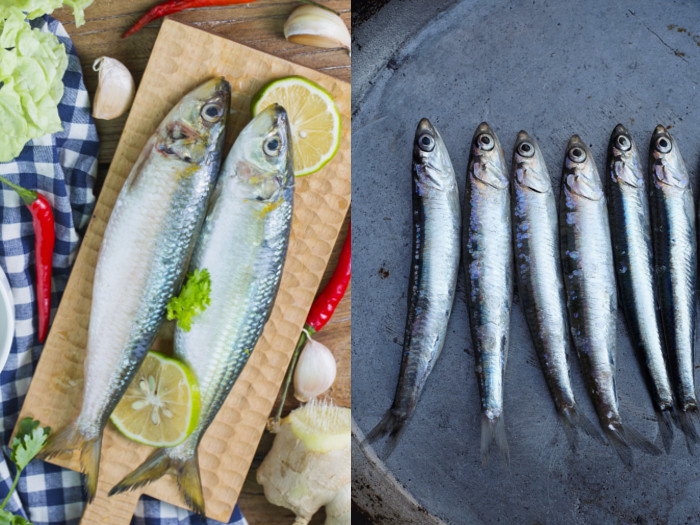The debate of sardines vs anchovies is common, particularly for people who love seafood snacks, but there are some key differences between the two.
Sardines vs Anchovies
Sardines and anchovies are both small, silver fish that are available in similar forms, but they are far from the same thing.
Sardines
- Sardines are a type of herring that is found in the Mediterranean Sea and the Atlantic Ocean and can be identified by their dark, round spots.
- The word sardine is often falsely given to any species of small, silvery fish in these waters, even though they are not all sardines.
- These fish are named after a region of Italy, called Sardinia, where these fish were once caught and packaged in large numbers. [1]
- The typical method of eating sardines is to roast, grill or marinate them first, particularly if you have a larger fish. Smaller fish are most often tinned and eaten whole.
- These fish are also very high in omega-3 fatty acids and are considered good for neurological health.

Sardines vs anchovies Photo Credit: Shutterstock
Anchovies
- Anchovies tend to be smaller and slimmer than sardines, and lack the recognizable spotting.
- Instead, they tend to have a grey or green tinge on their backs.
- The flavor of this fish is stronger than sardines, and there are more than 140 different species of this fish.
- These fish are often preserved and sold in either an oil-rolled or salt-cured form. [2]
- You can also fry these fish and serve them with lemon.
- These fish are also high in omega-3 fatty acids. [3]
